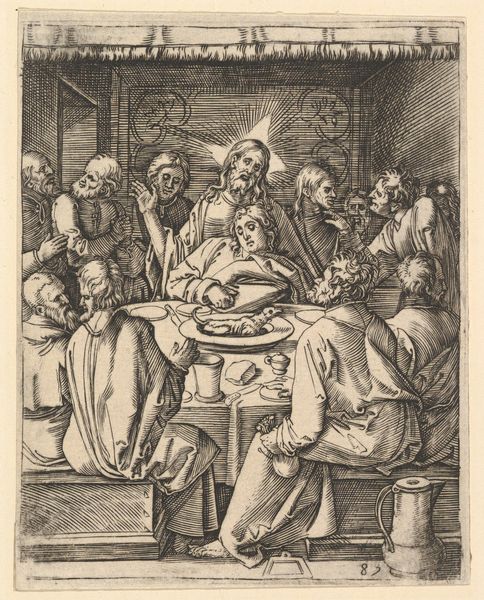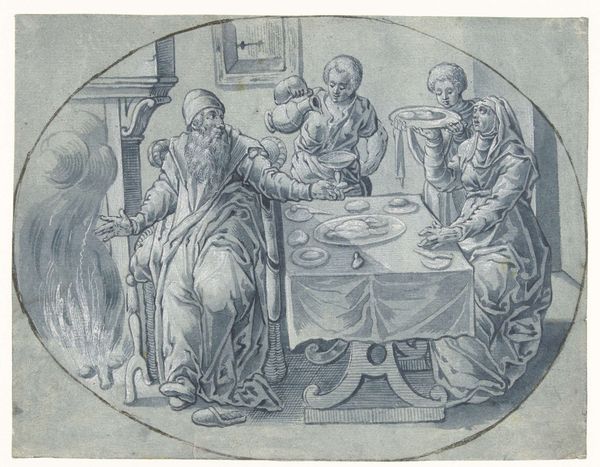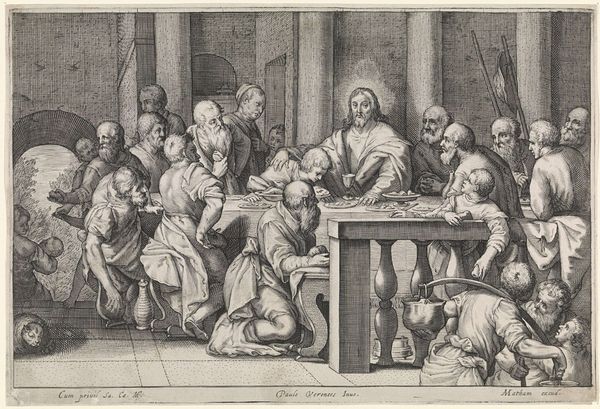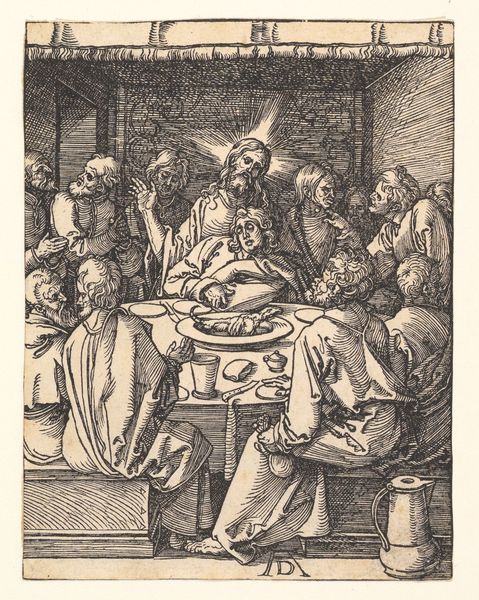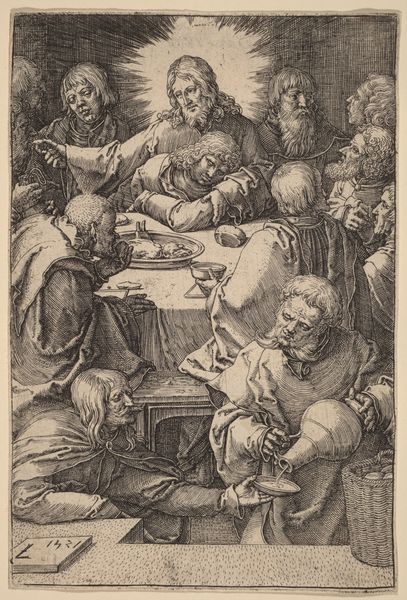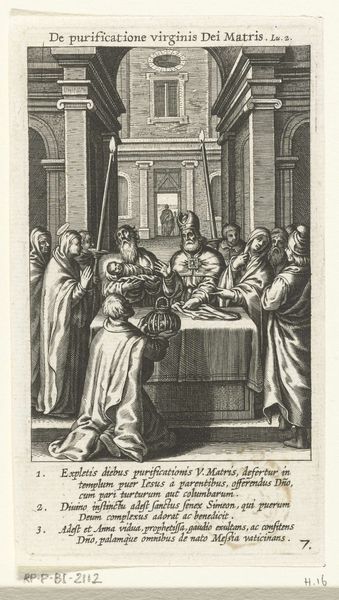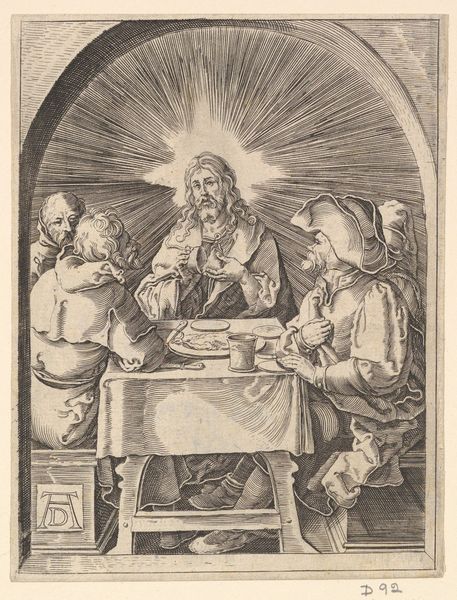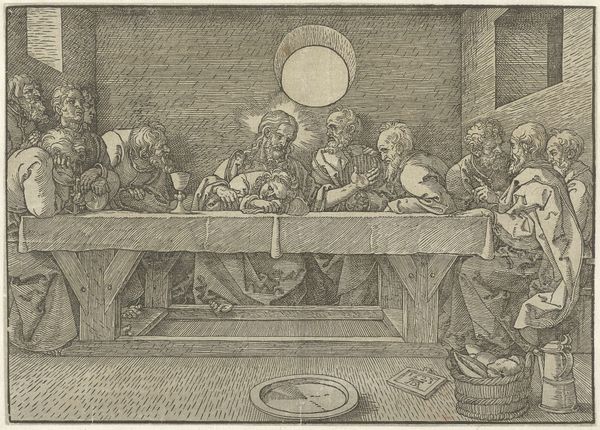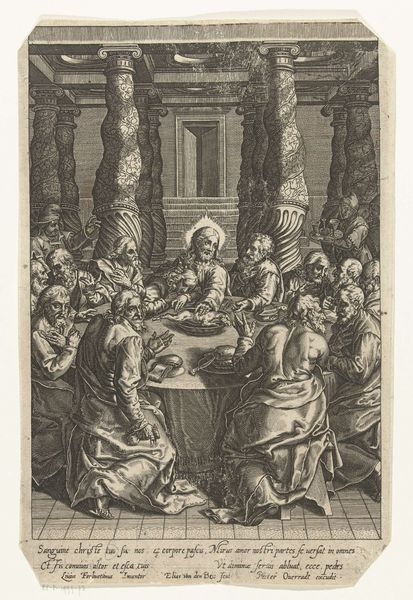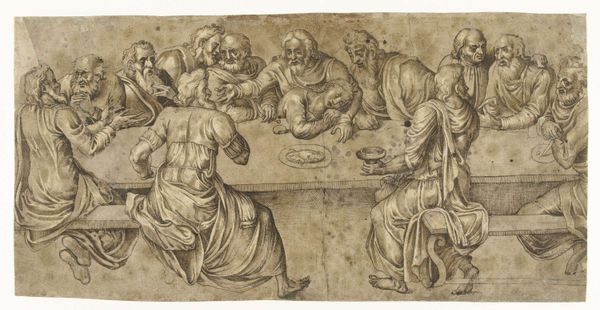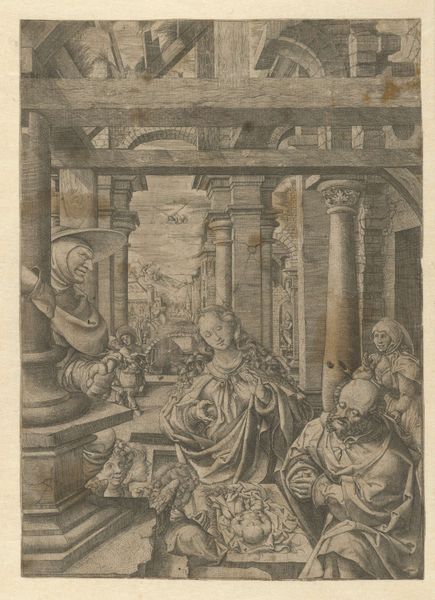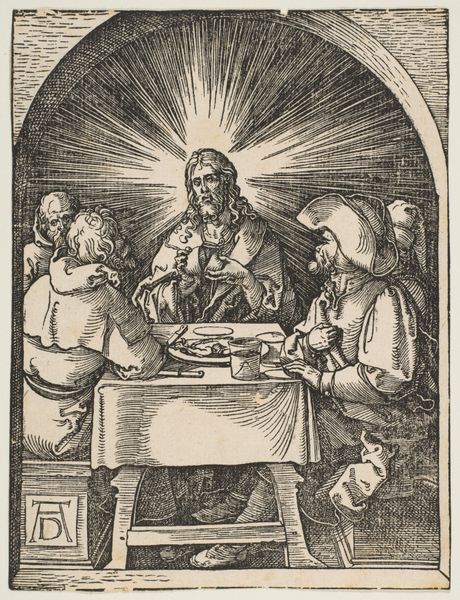
print, engraving
#
portrait
#
narrative-art
#
baroque
# print
#
figuration
#
line
#
history-painting
#
engraving
Dimensions: height 125 mm, width 160 mm
Copyright: Rijks Museum: Open Domain
Curator: Pieter Feddes van Harlingen created this engraving, "The Last Supper," sometime between 1611 and 1623. It’s part of the Rijksmuseum's collection. What strikes you most about it? Editor: It has an almost unsettling intimacy. The close cropping and detailed linework intensify the emotional weight, especially around the figure of Jesus. Curator: Engravings like this were, of course, produced for a market. It was a skilled labor meant for distribution, allowing broader audiences to access biblical scenes, mediating religious experience for private devotion and education. Think about the role of the printing press in the 17th century. Editor: True. Still, formally speaking, it’s all about contrasts. The dense hatching creating shadow plays against stark, illuminated faces. That tight composition squeezes figures into a shallow space, heightening the drama. Curator: The means of production also affect distribution. Consider the supply chains involved in procuring the metal plate, inks, and the workshop practices surrounding its creation. Who was commissioning these engravings? What social strata consumed them? These details contextualize Feddes van Harlingen’s labor. Editor: Yes, and the Baroque style comes through despite the medium’s constraints. We see it in the dynamism—the implied movement and heightened expressiveness, pushing against the stillness of the print. I am especially captured by Judas leaning into Jesus. Curator: Precisely, such details are essential to the meaning. Furthermore, by considering where such prints were traded, consumed, or collected, we get to know more about 17th-century religious culture and its engagement with images. Editor: I agree. It all adds layers to how we appreciate the artwork. What began for me as a question of visual power—line, contrast, form—broadens into one about reception, labor, and social life. Curator: Exactly! And tracing these historical circumstances provides deeper context and greater value for our viewing today.
Comments
No comments
Be the first to comment and join the conversation on the ultimate creative platform.
